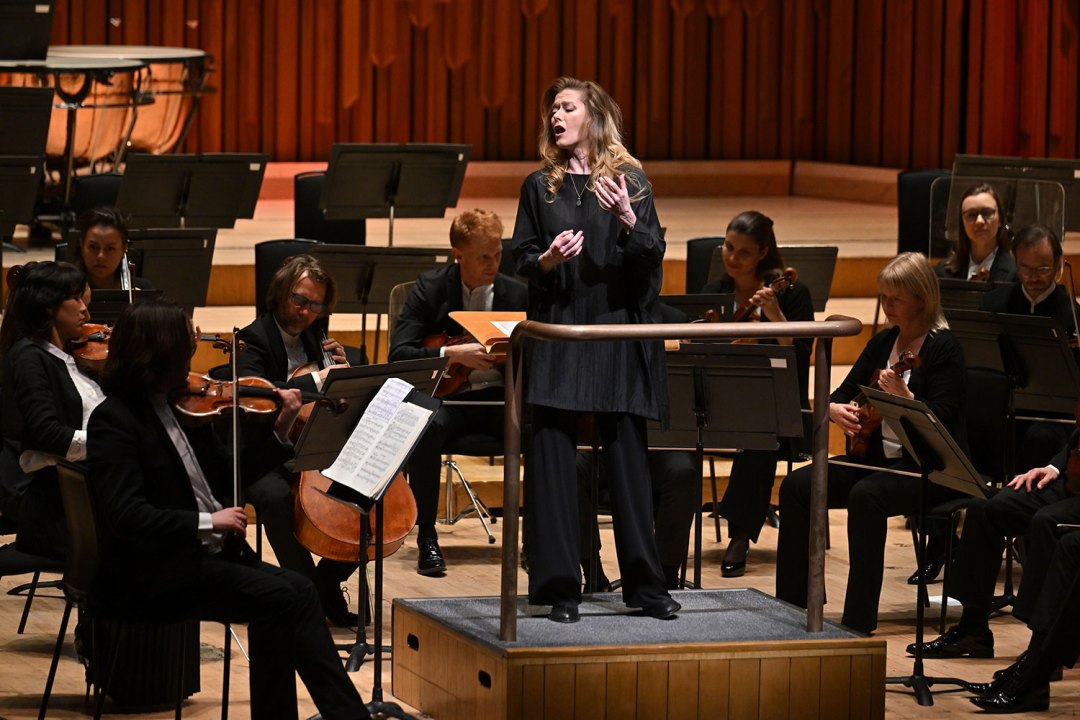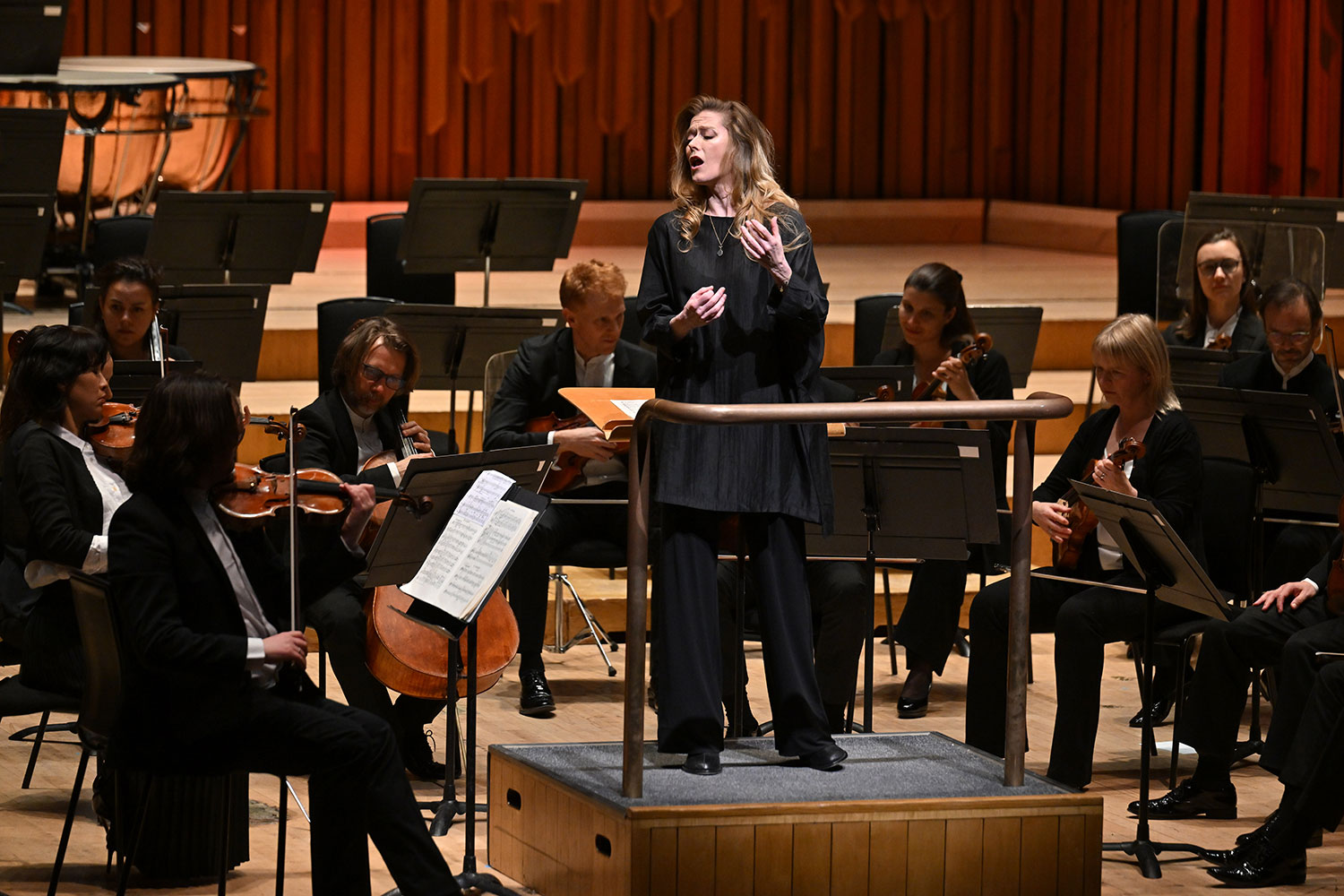
Last week, Barbara Hannigan conducted the London Symphony Orchestra in Haydn, Roussel, Ravel and Britten, though to be honest she had me at Haydn. It’s still relatively unusual to encounter him in a symphonic concert, and more than one promoter has told me that Haydn is ‘box office poison’, which is a shocking description of such life-enhancing music. Perhaps it’s down to sonic overkill. Bingeing on Shostakovich and Mahler has left our emotional reflexes distended and coarsened, and now we feel short-changed if every inch of the concert platform isn’t crammed with extra brass and percussion.
Still, it didn’t seem to have deterred the LSO’s audience – or for that matter the Hannigan groupies who leapt to their feet, honking and clapping like performing seals, after each piece. No complaints on that score: if a soprano who specialises in modern and niche repertoire can inspire super-diva fandom, there’s hope for humanity. And anyway, it’s hard to remain cynical in the presence of Haydn, in this case his Symphony No.104, nicknamed the ‘London’. It’s been said before but there’s such generosity in this music – such boundless warmth and invention – that it disarms criticism. How often do we encounter genius expressing itself so completely without side? Compared with Haydn, Beethoven, Bach and even Mozart can all seem self-conscious.
On the surface, then, he’s an odd fit for Hannigan, whose technique as a singer is formidable, and who isn’t exactly self-effacing as a conductor either. Hannigan went at the symphony like a puppy in a paddling pool: swift tempos, bouncing rhythms and plenty of mischief (find the right level of deadpan for the bassoons, and you’re halfway there with a Haydn symphony). She conducted without a baton, which some orchestral players will tell you blunts the clarity of their attack. On this occasion, I’d agree, but in a good way. This was full-bodied, Hogarthian Haydn rather than the laser-tooled precision that the period instrument movement has trained us to regard as the norm.
I could have done without some of Hannigan’s clunkier interventions – big theatrical pauses in the second movement and the gear-shift that broke the flow of the Trio section (Haydn’s tempo-change is implied, not explicit). The finale was manic, and the LSO violins performed marvels of light-speed articulation. Interestingly, Hannigan managed to incorporate fluctuations of tempo rather more subtly than elsewhere in the symphony – and since the brief moments of questioning, valedictory lyricism in this final movement are among the miracles of 18th-century art, that counts for a lot. It was one of those performances that worked on the night. Ultimately, Haydn is just too good to quibble over.
The rest of the programme found Hannigan on more characteristic territory. She sang and conducted Britten’s Les illuminations; which in effect meant that she sang, brightly, from the podium, while the LSO strings coped perfectly well under the direction of their leader, Benjamin Gilmore. No one disputes Hannigan’s phenomenal all-round musicianship but this business of conducting while singing doesn’t bring much to the table interpretatively – and no wonder, when the conductor’s back is turned on the players. Still, Britten’s string writing, eh? So bracing; so tactile and tingly. It’s like taking a North Sea breaker smack in the face. Think of the chamber music he might have written if he hadn’t fallen in love with a very English tenor.
Before that came a new orchestration (by Anthony Girard) of Ravel’s bird-inspired song-cycle Histoires naturelles, scored for a chamber orchestra with percussion but no harp, which felt like missing a trick. Other than that, it was beautifully done with diaphanous strings, multicoloured woodwind squawks for the peacock and guineafowl and plenty of air around the baritone Stéphane Degout – who sang as naturally as if he was speaking, witty and articulate. Hannigan was attentive but unfussy, and she was even more impressive in Roussel’s insect ballet Le festin d’araignée, where the LSO woodwinds, in particular, played with delicacy and melting tenderness. Hannigan gave the flautist Gareth Davies a solo bow, and he’d more than earned it.
Opera North is touring James Brining’s 2019 production of The Magic Flute with all its strengths and weaknesses – a fantastic, dreamlike setting being a strength, and a fixation with The Handmaid’s Tale (that most overworked of First Trump Era clichés) being a serious weakness. The big news this spring is the pairing of Soraya Mafi and Trystan Llyr Griffiths as Pamina and Tamino: fresh, expressive voices coupled to spirited characterisation. Emyr Wyn Jones’s bluff Welsh-accented Papageno is a thoroughly sound lad, and Patrick Lange, conducting, was a minor revelation – an invigorating, athletic reading, so trim and vivid that you’d swear that the Opera North orchestra was using period instruments. Even so, Justin Hopkins (Sarastro) and Anna Dennis (Queen of the Night) sounded slightly lost in the huge purple cavern of the Lowry.







Comments